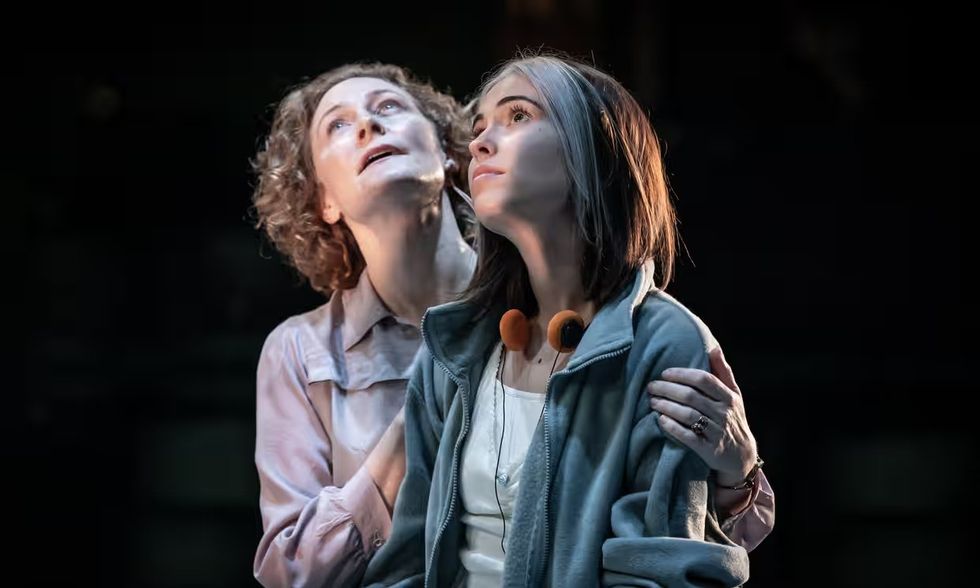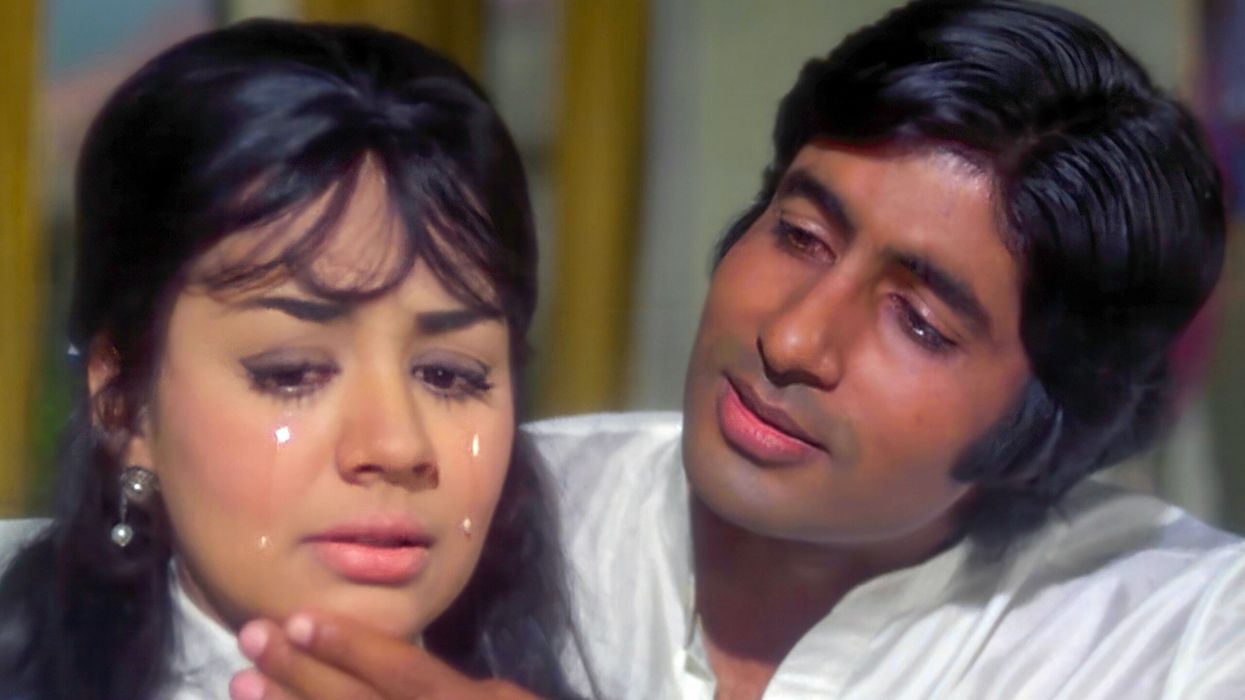THEATRE director Atri Banerjee said he “embraced” the challenge of helming back-to-back plays: Tennessee Williams’s The Glass Menagerie and Phoebe EclairPowell’s Shed: Exploded View.
Banerjee is currently working on Shed: Exploded View which runs at the Royal Exchange Theatre in Manchester from February to March, following which he will revisit The Glass Menagerie at the Rose Theatre in London from April to May.
“It’s a challenge, but one I am embracing and enjoying,” Banerjee told Eastern Eye.
“The Glass Menagerie is something we have done before (at the Royal Exchange Theatre in 2022), I know it pretty well; it’s already there at my fingertips. Whereas, Shed ... feels a bit unknown.
“The thing that feels exciting for me is that there are themes, ideas and images I keep coming back to. Although Shed... and The Glass Menagerie are very different pieces of work, it can be quite exciting to exist in the ground between them and almost subconsciously explore how the one work informs the other.
“Shed... has aspects of The Glass Menagerie in terms of memory and dreams and also something quite surreal and quite heightened, in fact.”
Powell’s Shed: Exploded View won the Bruntwood Prize, Europe’s biggest playwriting competition, in 2019.
Banerjee was part of the judging panel for the prize and remembers reading it and thinking it was “one of the best plays I’ve ever read”.
Powell was inspired to write the play after seeing the Cornelia Parker sculpture, Cold Dark Matter: An Exploded View, which featured a suspended cluster of debris from a garden shed that Parker asked the British army to blow up.
It is constructed as if held mid-explosion. Lit by a single lightbulb the fragments cast dramatic shadows on the gallery’s walls.
“The sculpture was the initial provocation for the form of the play,” said Banerjee.
“The play itself tells the story of three couples over 30 years. It addresses domestic violence and explores broader forms of violence, including political and societal issues in the world today.
“It’s centred on these three couples and muses on the fallout from domestic violence.
“The form is such that the scenes can be played in any order and it’s meant to be an explosion in action is what she (Powell) says in the initial stage direction.”
Banerjee said he wanted to explore why people act in an abusive manner and look at these characters as human beings rather than as mere “monsters”.
“Theatre is not a medium for black and white value judgments, it’s a medium for grey; for dealing with moral complexity and ambiguity as well as ethical ambiguity,” he said.
“There needs to be an effort to understand it (abusive relationships). There’s a need to empathise with it, as difficult as that might be.
“Theatre is the art form of empathy, in that way.”
He added: “It wouldn’t make sense to paint these characters just as monsters – because, if you do that, you can very easily dismiss them or disregard them and say, ‘This doesn’t happen in my life’.

“But, actually, by treating these characters as human beings, it forces people to reflect on their own relationships in their own lives. One of the things the play is interested in is where is the limit with transgressive behaviour? What do we actually count as a transgression? What are the little acts of hurt and violence that we all do to each other every day? “On the flip side, what are the acts of love that we do to each other every day?
How do we treat other people? By pushing it to an extreme with abusive behaviour - which the play doesn’t condone at all - it, however, asks us to take an unflinching look at it.”
While he takes on a modern play in Shed: Exploded View, the 30-year-old will tackle the classic The Glass Menagerie, something he said he is looking forward to putting his own “authorial stamp” on, once again.
Having overseen an earlier production of the play in 2022, Banerjee is coming back to it as he enjoys the challenge of taking a historical play and making it “legible and accessible to a modern audience”.
Written by Williams in 1945, The Glass Menagerie is set in St Louis in 1937 during the great depression. It draws from the memories of the narrator, Tom Wingfield, an aspiring poet who toils in a shoe warehouse to support his mother, Amanda, and sister, Laura.
In the Paradise Dance Hall monologue, Tom talks about feeling a sense of impending doom, referencing climate change in the form of burning hot summers and wars, mentioning the bombing of Guernica and fascism in Spain.
“I don’t think I’d ever seen a production of the play which, for me, brought those themes to the fore before. I’ve tried to emphasise those themes, the social, economic, political and geopolitical context, because I felt like it’s something that we’re feeling very presciently today,” said Banerjee.
“At the time when we were doing the first production, the war in Ukraine had started and now coming back to it we have the war in Gaza, which is adding to this feeling of impending doom and global collapse.
“Although these themes aren’t necessarily explicit in the production, having the Paradise Dance Hall monologue at the heart of it is a way of emphasising those things because it comes at a point where he’s talking about war and economic collapse.
“These characters are struggling, and I am interested in how characters are shaped by political and economic forces. I don’t think people are ever just products of their interior psychology, their psychology is determined by the way that society treats them.”
Banerjee’s star has been on the rise The Stage’s best debut director award in 2019. He has directed shows across the country, including Harm (Bush Theatre), Britannicus (Lyric Hammersmith), Julius Caesar (Royal Theatre Company) and Into The Woods (Bristol Old Vic Theatre School).
The son of Indian parents, Banerjee said it’s “fantastic” to see “the wealth and breadth of British Asian experiences” in theatre.
“It’s so great to see work by British Asian directors be so celebrated in the mainstream, whether that’s something like The Father and the Assassin at the National, which is Indhu’s (Rubasingham) work or whether it’s a play like Blue Mist at the Royal Court which Mili Bhatia directed,” he said.
Describing Rubasingham’s appointment as director at the National Theatre as a “brilliant appointment”, Banerjee added he hoped this doesn’t lead to a feeling that “we’d done enough” in terms of achieving representation in theatre.
“There is so much talent out there. Amit Sharma (artistic director) at the Kiln Theatre, that’s another brilliant appointment. I have to give a shoutout to the brilliant Abdul Shayek, who, very tragically, is no longer with us. He was doing amazing work at Tara, thinking quite radically and revolutionarily about what British Asian work can mean.
“It’s great to be among colleagues, friends and peers who all do very different work. It feels brilliant to have our voices at the fore,” Banerjee concluded.






 The Christmas light walks in central London that still feel festive Getty Images
The Christmas light walks in central London that still feel festive Getty Images 





